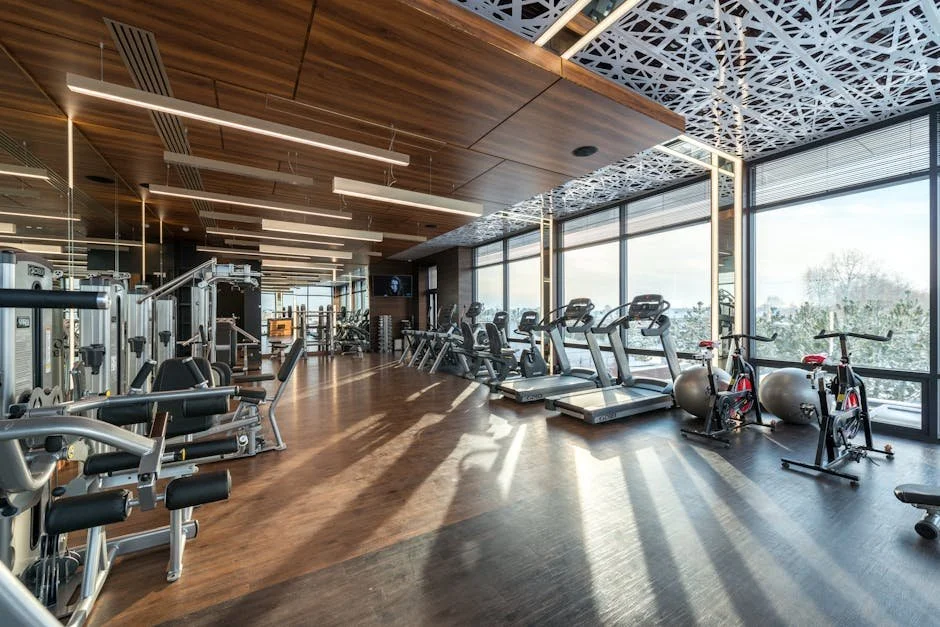6 Tips to Maximize Your Low-Impact Cardio Sessions
1. Understanding Low-Impact Cardio
Low-impact cardio exercises are fantastic options for those looking to improve their cardiovascular health without putting excessive stress on their joints. When engaging in low-impact cardio, you can get your heart rate up and burn calories while being gentle on your knees, hips, and ankles. Creating a routine centered around low-impact exercises can benefit individuals of all fitness levels, from beginners to seasoned athletes.
One of the primary advantages of incorporating low-impact cardio into your fitness regimen is the reduced risk of injury compared to high-impact activities. By choosing exercises that are kinder on your body, you can maintain a consistent workout schedule without overburdening your joints. This form of exercise is particularly beneficial for individuals recovering from injuries or dealing with conditions like arthritis.
Moreover, low-impact cardio can still offer a challenging workout experience when done correctly. Whether you prefer walking, cycling, or swimming, there are numerous options available to keep your workouts engaging and effective. Understanding the principles behind low-impact cardio can help you tailor your routine to meet your fitness goals while prioritizing joint health.
2. Choosing the Right Equipment
Selecting the appropriate equipment is crucial for maximizing the benefits of your low-impact cardio sessions. When shopping for gear, consider items like elliptical machines, stationary bikes, and water rowers, which are known for being gentle on the joints while providing an excellent cardio workout. Investing in the right equipment can make your exercise routine more enjoyable and help you stay motivated to reach your fitness objectives.
For those who enjoy walking or running, supportive footwear is essential to minimize the impact on your legs and feet. Look for shoes specifically designed for walking or running, with adequate cushioning and arch support. The right equipment, from shoes to workout gear, can enhance your comfort during low-impact cardio activities and reduce the risk of discomfort or injury.
3. Effective Low-Impact Cardio Exercises
When it comes to choosing effective low-impact cardio exercises, variety is key to targeting different muscle groups and preventing workout plateaus. Walking briskly, using an elliptical machine, or practicing gentle yoga can all contribute to your cardiovascular fitness without straining your joints. Mixing up your routine with a combination of exercises can keep you motivated and engaged in your workouts.
Incorporating activities like swimming or cycling into your low-impact cardio routine can offer additional benefits by engaging different sets of muscles and providing a refreshing change of pace. These exercises not only boost your heart rate but also strengthen your core and improve overall endurance. Experimenting with different types of low-impact cardio can help you discover new favorites that you enjoy and are beneficial for your fitness journey.
4. Tips for Increasing Intensity Safely
Gradually raising the intensity of your low-impact cardio sessions is a smart approach to challenging your body while avoiding overexertion. Start by increasing the duration of your workouts or adding resistance to your exercises to make them more challenging. This progressive method allows your body to adapt to higher demands over time, leading to improved stamina and endurance.
Listening to your body's cues is essential when intensifying your workouts to prevent injuries. If you experience discomfort or pain during an exercise, scale back the intensity or modify the movement to reduce strain on your joints. Paying attention to how your body responds to increased intensity levels is key to making sustainable progress in your fitness endeavors.
5. Importance of Proper Form and Technique
Maintaining proper form and technique is fundamental for maximizing the effectiveness of your low-impact cardio workouts. Whether you're doing aerobic exercises, strength training, or flexibility exercises, focusing on correct alignment and posture ensures that you target the intended muscles while reducing the risk of injuries. When performing low-impact cardio, pay attention to your body mechanics to execute each movement safely and efficiently.
Improper form not only diminishes the benefits of your workout but can also lead to strain on your joints and muscles. Engaging your core, relaxing your shoulders, and aligning your spine are essential components of executing exercises with proper form. Practicing good technique not only enhances the results of your low-impact cardio routine but also helps in preventing unnecessary stress on your body.
6. Incorporating Strength Training
Integrating strength training exercises into your low-impact cardio routine can offer a comprehensive workout that targets different aspects of your fitness. Combining cardiovascular activities with strength exercises like bodyweight squats, lunges, or resistance band workouts can enhance your muscle tone, increase bone density, and boost metabolism. Adding strength training to your regimen can help you achieve a balanced and functional level of fitness.
Strength training not only complements your low-impact cardio sessions but also contributes to better joint stability and mobility. By incorporating resistance exercises, you can strengthen the muscles that support your joints, reducing the risk of injuries and enhancing your overall physical performance. Balancing low-impact cardio with strength training creates a well-rounded fitness routine that promotes both cardiovascular health and muscular strength.

